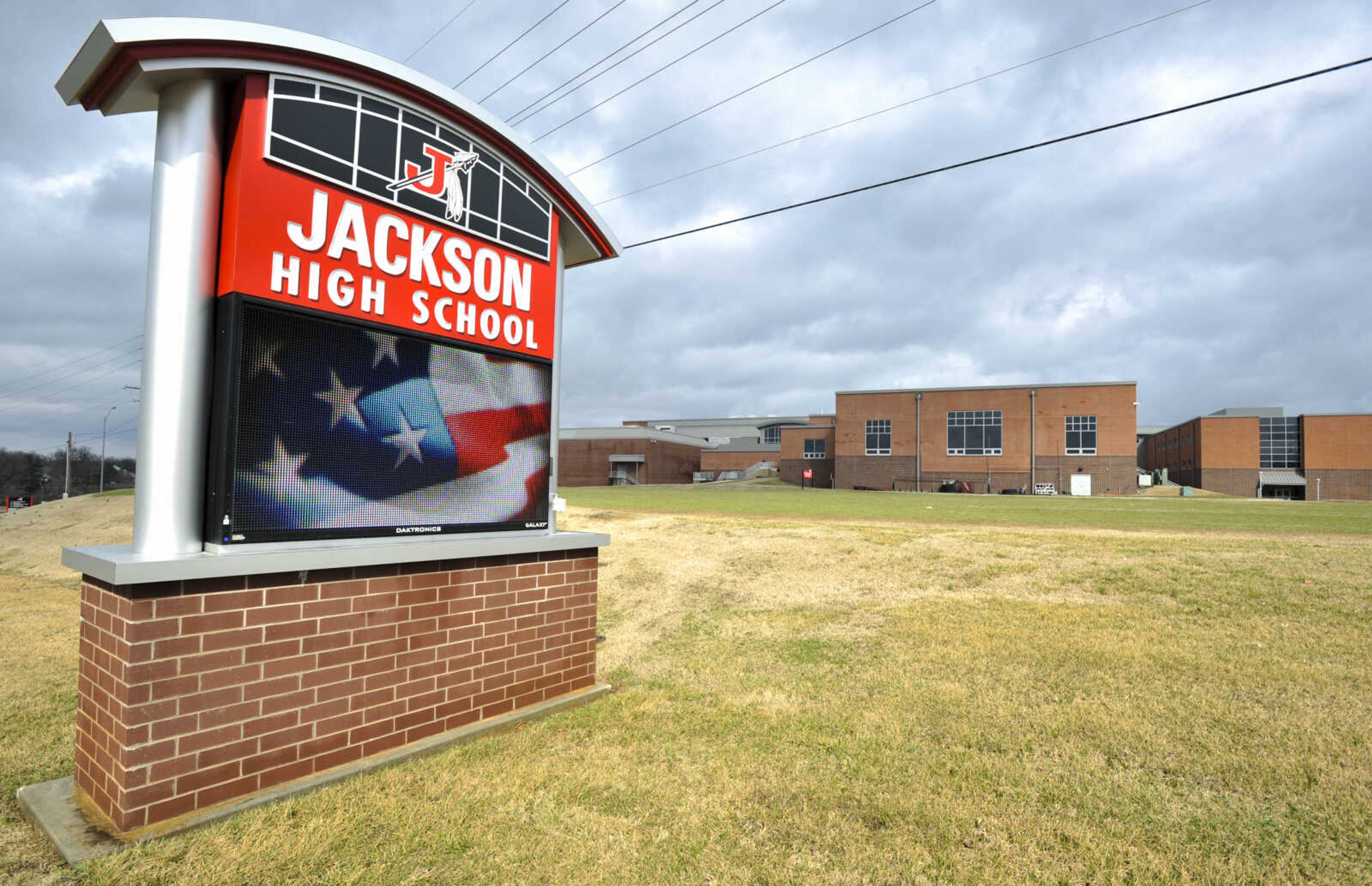Jackson schools eye future growth
Jackson's public schools aren't overcrowded yet, but growing populations will soon test the limits of existing buildings. Easily the largest school district in a four-county area, and one of the largest in all of Southeast Missouri, Jackson schools are wrapping up construction projects that touched nearly every building, save for the junior high school, said superintendent John Link. ...
Jackson's public schools aren't overcrowded yet, but growing populations will soon test the limits of existing buildings.
Easily the largest school district in a four-county area, and one of the largest in all of Southeast Missouri, Jackson schools are wrapping up construction projects that touched nearly every building, save for the junior high school, said superintendent John Link. That's where administrators are looking to make the next round of changes to accommodate more students heading that way within the next two years. Officials will take a deep dive into the comprehensive plan this summer, looking at how to address the volume of students.
Proposition J, a bond issue approved by voters in April 2017, allowed the district to borrow more than $22 million to address needed renovations. That bond issue helped in many ways, but did not address every space issue. A large influx of fifth- and sixth-grade students is forcing a hard look at what the district might need to do to accommodate students at the junior high.
The recent renovations include a new "J wing" (the freshman center) at the high school and several more projects to add classrooms or other needed spaces.
Phase 1 addressed the high enrollment numbers at the elementary level, hiring more staff members and shuffling grade levels around to present locations.
All elementary school buildings now house kindergarten through fourth grades. The middle school has grades 5 and 6; the junior high 7 and 8, and the high school 9 through 12.
According to DESE's website, in 2018, districtwide, Jackson had nearly 5,000 students enrolled, and the ratio of students to teachers is 19 to 1. In Cape Girardeau, nearly 4,000 students are enrolled, and the ratio of students to teachers is 17 to 1 -- the state average.
While the population within the district continues to grow, Link said the tax base and assessed value of property (used to determine tax rates) doesn't necessarily grow at the same pace as students added to the schools.
"We spend about $7,500 to $8,000 to educate each student," Link said. "The state gives $4,500 to $5,000 per student."
Statewide, the average total spent per student is $9,000, Link said.
"We're providing great achievements for what we're paying right now," Link said. "I really feel we're doing more with less."
Link said one of the promises with Proposition J was to lower elementary class sizes, "and we've done that. The chore we are up against is maintaining that."
To maintain the lower class size, as enrollment increases, "we have to continue to increase staffing," Link said.
While none of the classes in the secondary buildings are "super crowded," there are some higher-enrollment courses, Link said. Fine arts, industrial arts, physical education, tend to run higher than core classes -- as is typical in many other districts, Link said.
"But the goal is not to have a situation where we have more students than desks," Link said.
Link said the middle school has 870 students. The high school has 1,600 students.
At the junior high, grades 7 and 8 together have about 800 students -- meaning the student population at the junior high will grow by about another 100 students in the next couple of years, Link said.
That's a lot of students in each building, Link said, and students need space -- not just in classrooms, but also libraries, collaborative learning spaces, cafeterias, and so forth.
"We need to teach kids to think critically, learn collaboratively -- to do things computers can't do," Link said.
Even though administrators expect an influx of students, Link said he doesn't anticipate a need for an entire new building at the junior high, but perhaps new classrooms and other spaces.
Link said he expects the rate of growth at the junior high to remain steady in the more distant future, if not grow more rapidly.
"We've got to prepare for that," he said.
Added to the issue of space, Link said, statistics showing expected growth doesn't align with actual growth.
"There's a major gap" between the two, Link said.
Administrators are looking at demographic information including how many babies are born in the region, Link said, to try to anticipate what space will be needed, and when.
But, Link said, "We don't want to be one of these districts that looks at growth, panics, and builds so much we have space sitting empty five years from now."
Administrators want to ensure "our ducks are in a row" before moving on plans to build, Link said.
As far as the high school is concerned, Link said, "We're landlocked."
Bounded by Jackson Boulevard, St. Paul Lutheran Church and School, and the city cemetery, Jackson High School doesn't have space to expand on the existing campus.
The district turfed the high school's football field last year, to allow for heavier use. Marching band and all football teams can use the space to practice, freeing up the practice field to be considered for a future building, Link said.
Renovations at the Agricultural, Industrial Technology (AIT) building, formerly the Primary Annex, allowed for program expansion, Link said.
"We're going to have to get a bit creative" at the junior high school, which faces a similar issue, Link said.
With that in mind, this summer, district officials will reassess the strategic plan.
When Link first came to the Jackson school district five years ago, the strategic plan was developed through meetings with community members, business leaders, students, faculty members, families, and others, Link said, and it's been continually reassessed since.
That plan has helped guide the administrators, Link said, and this summer, it's time to take another look at it, especially in light of demographic and financial information.
"We're trying to put together a whole plan so we can have good, accurate, complete information," Link said. "That way, when the times comes, we can be outright and transparent with voters."
Link said he believes another bond issue might be necessary sooner than later.
"With this group coming through, class-wise, we're OK, but our cafeteria area has to be increased, we have to do something with band, music, performing arts," Link said.
Link said the junior high band has approximately 250 students, and a performance hall that holds only 500 audience members.
Once both parents, siblings, extended family members attend, that's a packed house pretty quickly, Link said.
The district purchased more than 80 acres on Old Toll Road, a former orchard held by the Beggs family, in 2017, as an investment, and as a potential future site for another building, Link said.
That land is being rented out for farming now, Link said, and several loads of dirt from the property were used in other building projects in the district.
"It was a good investment regardless," Link said.
mniederkorn@semissourian.com
(573) 388-3630
Connect with the Southeast Missourian Newsroom:
For corrections to this story or other insights for the editor, click here. To submit a letter to the editor, click here. To learn about the Southeast Missourian’s AI Policy, click here.











